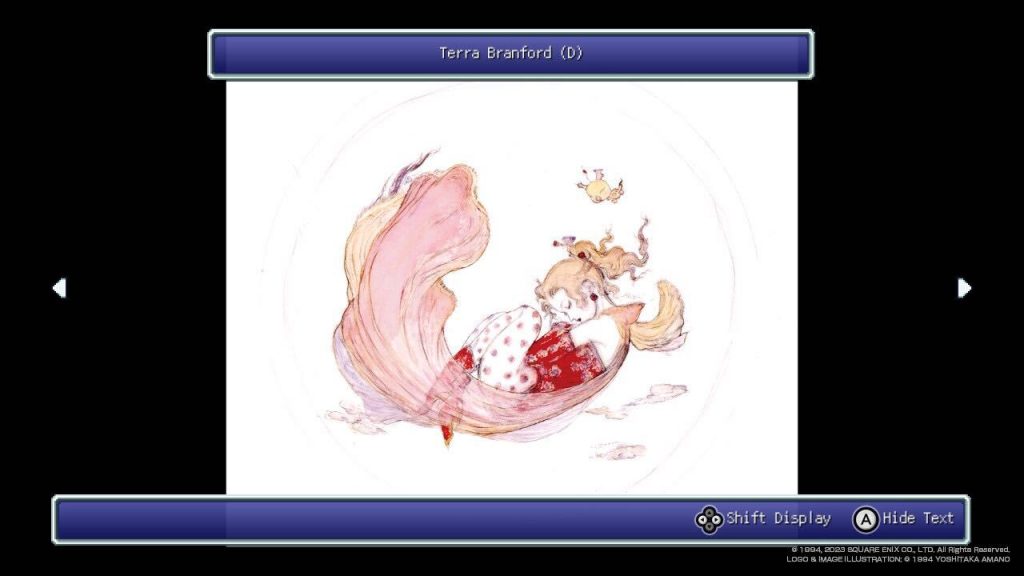The Final Fantasy franchise holds a special place in the hearts of gamers worldwide. What began as a passion project by a dedicated team of developers at SquareSoft in Japan has grown into a billion dollar franchise with 16 numbered entries and a plethora of spinoffs, ranging from kart racing to rhythm games. Despite the advancements brought by each generation — such as 3D graphics, cutscenes, real-time combat, and orchestral soundtracks — there’s a timeless magic that resides in the pixelated charm of the first six mainline entries.
Over the years, Square Enix has released remakes of these games on various platforms, each with its own unique style. For example, there are the Final Fantasy Advance series on Game Boy Advance, which adopt a more traditional re-release approach with minimal modifications to sound and style, and the 3D remakes of Final Fantasy III and Final Fantasy IV on Nintendo DS, which offer entirely new experiences by ditching the pixelated sprites for full 3D environments and even adding voice acting in certain parts. However, Final Fantasy Pixel Remaster sets out to do something different: it carefully enhances aspects of each game while preserving the heart and soul of the original experience. Not without flaws, Final Fantasy Pixel Remaster successfully takes players on a nostalgic trip down memory lane while incorporating quality of life improvements that enhance the overall experience without compromising the legacy of these beloved classics.
![]()
Not only was Final Fantasy a pioneer in fantastical storytelling, it was also at the forefront of technology with stunning graphics that pushed the hardware of its time to its limits. Unlike some of the newer Final Fantasy games, the first six titles offer a traditional RPG experience with pixelated graphics, turn-based combat, and even a bit of level grinding for good measure. However, Final Fantasy is so much more than just its battle style. The series has always delivered compelling stories and emotional moments, even with the limitations of 8 and 16-bit hardware.
Before we delve into the enhancements and quality of life improvements offered by Pixel Remaster, let’s take a moment to appreciate the lasting appeal and importance that these games have. My personal favorite has to be Final Fantasy VI (Final Fantasy III in the US), which somehow manages to push the Super Nintendo to its absolute limits with the size and scope that this game has to offer. The characters are some of the most fleshed out in the series, and the game features one of the most heartbreaking and memorable moments that I can recall from a game from that time period. And if that’s not enough, the soundtrack also happens to be one of the best video game soundtracks of all time, with dozens of tracks that never get stale no matter how many times you’ve heard them throughout your adventure.
Every Final Fantasy fan I’ve spoken to feels this way about one game in particular in the series, whether it’s the original adventure of Final Fantasy I, the fantastical adventures found in Final Fantasy IV, or the steampunk-esque world of Final Fantasy VI. Each of these games holds different meanings to different people. And with the release of Pixel Remaster, it’s evident that Square Enix understands what these games mean to their fans and has treated them with extreme care in this collection. So without further ado, let’s talk about what’s changed in Pixel Remastered.
Worlds Reborn
The most noticeable change when starting up one of the six titles in Pixel Remaster is the updated graphics. The whole point of Pixel Remaster was to enhance the original versions while still preserving their heart and soul. Each game is now presented in widescreen aspect ratio with updates to many of each game’s sprites. While character sprites mostly remain the same, there are some obvious changes that die hard fans may point out. Personally, I believe these changes were necessary for the games to adapt to the updated format, but opinions may vary among fans. Additionally, there are updates to certain background areas, with notable improvements seen in the beginning of Final Fantasy VI, where the scene overlooking the town of Narshe is now even more beautiful with added details to the city below. These little changes truly make me fall in love with these games all over again.
Look at that view!
Another enhancement in Pixel Remaster is the game being presented in high definition and widescreen. As someone who has played through all of these titles multiple times, it can be strange to see additional sprites peeking out on the left and right sides of the screen due to the increased real estate the game now offers. However, Square Enix has taken great care to ensure that the experience retains its classic feel, even with the slightly different presentation.
Speaking of the classic feel, one of the biggest complaints fans had when Pixel Remaster was released on PC and mobile last year was the modern typeface used for the game’s text. While the game itself looks beautifully retro, the text using a modern font took many players out of that mindset. Thankfully, Square Enix listened to the fans’ feedback and released an option to swap between the classic and modern fonts right from the main menu. Personally, I didn’t have too many issues with the newer font, but after swapping to the classic font and playing for a few hours, I can easily say that I’ll never go back.
Modernized Music
Outside of the visual overhaul, another one of the biggest updates made to Pixel Remaster is the inclusion of a reimagined orchestral versions of the classic Final Fantasy soundtracks. Although the original soundtracks were already fantastic, even on limited hardware of their time, the new soundtracks in Pixel Remaster (especially in games like Final Fantasy II, IV, and VI) bring a fresh and modern take on some of my favorite 8 and 16-bit songs. There were genuine moments during my playthrough when I had to stop and just listen in awe of the updated tracks. For me, tracks like “The Mines of Narshe” from Final Fantasy VI and “Theme of Love” from Final Fantasy IV really blew me away, and I’m sure Final Fantasy music lovers everywhere will find an updated track that resonates just as much with them.
![]()
While I personally prefer playing with the updated soundtracks, Pixel Remaster also offers the option to swap between the classic and updated soundtracks on PlayStation 4 and Switch. Even if you’re an RPG purist who wants to retain the classic feel and sound as much as possible, I highly recommend trying to play through portions of the game with the new soundtrack. I sincerely don’t think you’ll regret it.
Son of a Submariner! Look at all these enhancements!
In addition to the visual and audio enhancements, Pixel Remaster also includes options to “speed up” the gameplay for players who are primarily interested in experiencing the story. In the game settings, you’ll find several “Boost” options that players can toggle back and forth, such as increased experience (up to 4x) for each battle, increased Gil drops, additional magic points, and the ability to disable random encounters entirely. With the vast amount of story content across these six games, having the option to speed up some of the more monotonous parts of classic RPGs is a welcome addition for players who want a more story driven experience. Personally, I may not use many of these features as I revisit these games, but I appreciate the addition.
Almost Everything You Could Want
Those of you looking for some additional content for each game, there’s quite a lot to offer in Pixel Remaster, but unfortunately, it doesn’t include the comprehensive updates that we’ve seen in other re-releases over the years. From each of the game’s main menus, you can access a Sound Player that has all of the game’s music already unlocked for you to listen to right off the bat, complete with nifty animations to watch as you enjoy! There’s also an illustration gallery that includes concept art, character artwork, and logos from the legendary Yoshitaka Amano, and a comprehensive bestiary, with loads of details and images of the enemies you fight in each game. You can even re-fight enemies you’ve already encountered if you feel the urge!

While there’s a lot here, there are a few things that are missing that I would have loved to see from the other re-releases of these games over the past 25 years. The first omission was the series of cutscenes that were included for the PlayStation re-releases of Final Fantasy I, II, IV, V, and VI. While I agree they probably didn’t make a lot of sense to include in the games themselves, it would have been nice as a bonus feature. Additionally, bonus content that was found in the GBA version of Final Fantasy IV and VI are omitted completely, with Final Fantasy IV’s Lunar Ruins and Final Fantasy VI’s Soul Shrine missing in action. Once again, I understand that these are meant to pay homage to the original releases, not the re-releases, but the lack of some of this content makes this collection seem a little less definitive than it could be. Don’t even get me started on the missing Final Fantasy IV: The After Years…
Final Thoughts, Fantasy Realized
Simply put, Final Fantasy Pixel Remaster is a magical experience that longtime fans have been dying to play for years. Square Enix’s commitment to honoring the legacy of these classic titles while enhancing them with orchestral soundtracks and subtilty enhanced visuals is a master-class in restoring classic games. It somehow feels just like I remember it and completely new all at the same time. While I’m still hoping that the company is cooking up an HD-2D remake of Final Fantasy VI at some point, having these six classics re-released will hold me over for years to come as we wait. For those of you like me who have played all of these games countless times over the years, I imagine you’ll have just as much fun as I did playing them with all the bells and whistles this collection has to offer. For those of you who have just had the pleasure starting their journey with the series, you’re in for one heck of a ride.
Leave a Comment
System: Nintendo Switch
Release Date: April 19, 2023
Categories: Role-playing, adventure
Publisher: Square Enix
Developer: Square Enix


